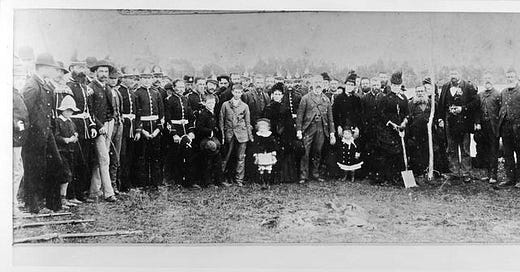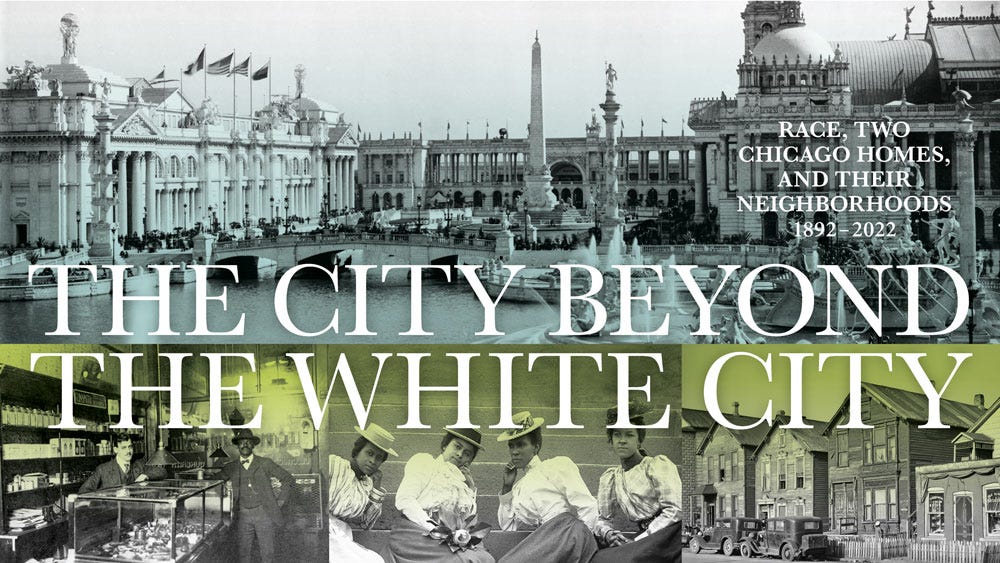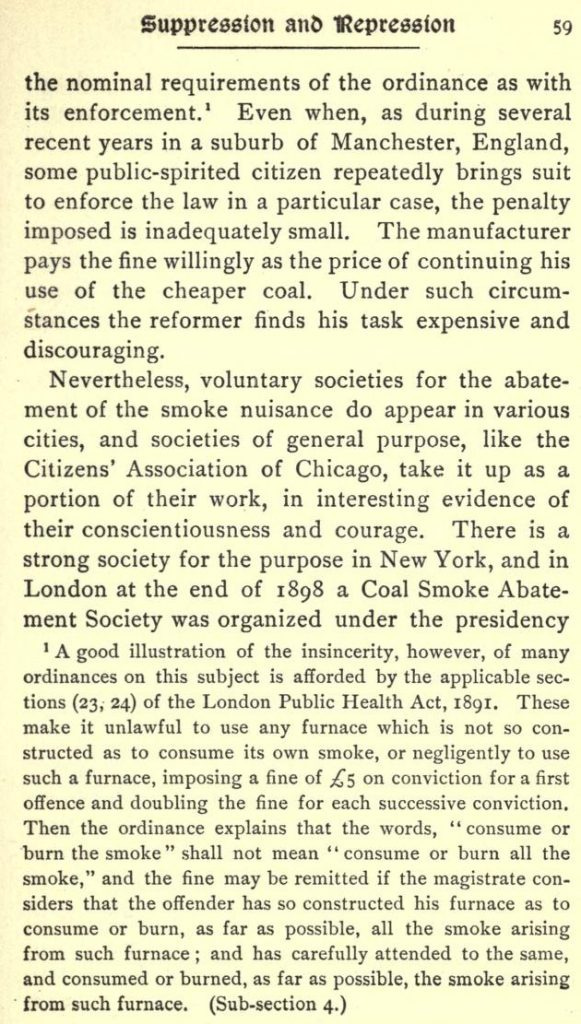City Beautiful Movement and the genesis of Motorways
My notes on Germany 1648 to 1806 , Germany 1800 to 1840s , Waikato the golden age 1840s to 1850s , Waikato 1860s , Gentry & Speculators , The beginning of modern planning: Water, Sewage, Housing, Transport, City Centre, Markets and Zoning, 1890s: Introduction, Dwellings & Lots, Reason for Zoning, Horses, Cyclists & road deaths, York
The landscape architect Frederick Law Olmsted was a leading figure in the American city beautiful movement. Olmsted was involved with the design of Central Park in New York, the Riverside Improvement Company, the 1893 Chicago Fair, and many other great projects. According to Wikipedia ‘The movement began in the United States in response to crowding in tenement districts, during the 1890s and under the leadership of the upper-middle class’. In New Zealand the first urban beautifying society was the Dunedin Amenities Society, formed in 1887, followed by the Christchurch Beautifying Association in 1897 to ‘plant and otherwise beautify the uncultivated public places in the city’. The Wellington Beautifying Society charged itself to include ‘the removal or improvement of buildings…which disfigure the landscape’. In Hamilton a beautifying society was formed in Oct 1912 ... the council gave money to the society to spend and allowed it to cultivate various borough properties as it saw fit. In the first six months the society spent $100 on a river walkway ... the ferry bank lost its untamed look ... nearly 100 shrubs and trees were set in the ground (Gibbons, p. 179). In 1941 for every annual $300 of council grant, improvements of $500 were effected. The Society members led the campaign to preserve Claudelands Bush, the last remaining stand of kahikatea that had covered much of the town before human settlement. For more information on Hamilton’s beautifying society see Petra Jane Edmunds’ Improving on Nature? A Critical History of the Hamilton Beautification Society. Environmental History AU NZ - After the war the Society disposed of its assets to the council (Gibbon, p. 214)
Astride the river, A history of Hamilton; by P.J.Gibbons
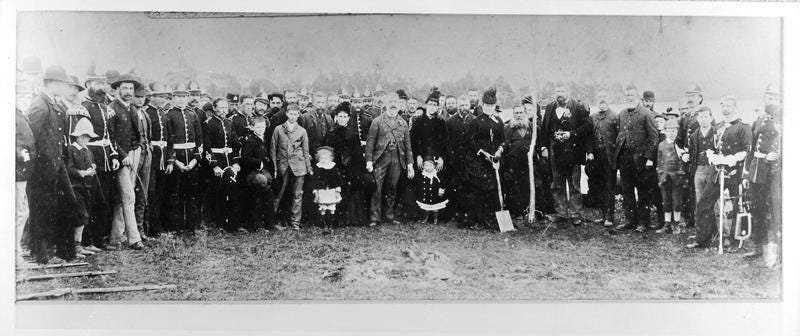
In the USA The Riverside Improvement Company purchased a 1,600-acre [6.47km2 or 647ha] tract of land along the river and in 1868 hired Frederick Law Olmsted of New York to design an elite suburban community. The population grow slowly, peaking at 10,357 in 1970 (*link). Riverside is a 20-minute train ride to downtown [Chicago] ... [the streets have] no square corners and no cul-de-sacs (**link). ‘Some of the covenants dealt with aesthetics, signs, land-use, and other seemingly innocuous issues that were believed to lower home values if left unaddressed; for instance, they prohibited the sale or conversion of residential property for other uses, banned fences and billboards, required certain setbacks, regulated heights, dictated that no more than one house be built per lot, mandated lawn mowing, and relegated the hanging of laundry to backyards’ (Hirt, p.129). Today’s Wikipedia stats for Riverside are: population 9,298, area 2 square miles or 5.17km2, density 1,814 ppkm2
Zoned in the USA: by Sonia A. Hirt
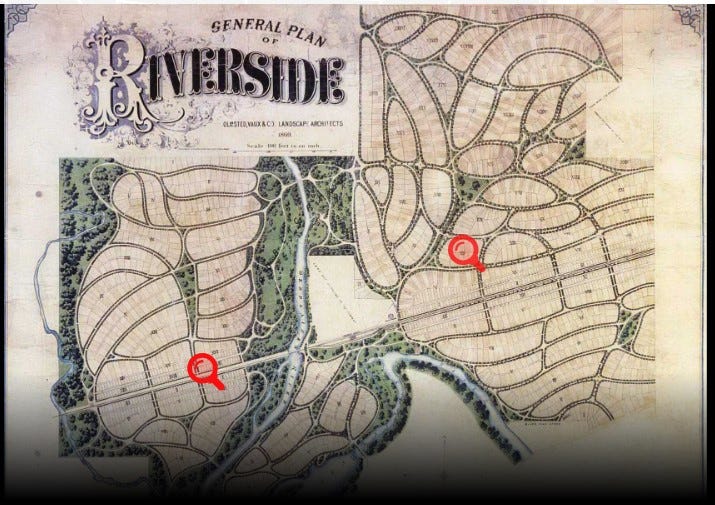
The Chicago Fair of 1893: the Fair set a world record for a single day outdoor event attendance, drawing 751,026 people. Forty-six nations participated in the fair, which drew over 27 million visitors, compared to the 2015 Milan Expo, which attracted 22 million, and the 2020 Dubai Expo, which attracted 24 million. The Chicago Fair was a big event. It included a semi-utopian city called the ‘white city’ in which visitors were meant to be shielded from poverty and crime (Britannica). Olmsted and Burnham’s work at the Fair launched the “City Beautiful” movement, which promoted the introduction of beautiful green spaces in urban centres nationwide to improve residents’ morale and quality of life (link 2).
Britannica (Link 1) writes that Charles Mulford Robinson’s book - The Improvement of Towns and Cities, in 1901 became the bible of the “City Beautiful” movement (link 2). In this book Robinson considers streets laid out on a grid or checkerboard design childish (p.12); and new asphalt pavement is always preferable to cobblestones, to the point that some cities prohibited cobblestones (p.40 p.42). In solving the problem of smoke ... popular opinion called for complete prohibition of the creation of smoke when there is a notion that smoke means industry ... as a matter of fact, however, few manufacturing communities where the smoke nuisance has existence, lack a restrictive ordinance ... but the trouble is not so much with the nominal requirements of the ordinance as with its enforcement – see example of London law at end of blog post. The use of electrical energy suggests that in time this invisible power may relieve cities of the pall of smoke’ (p.57-60)
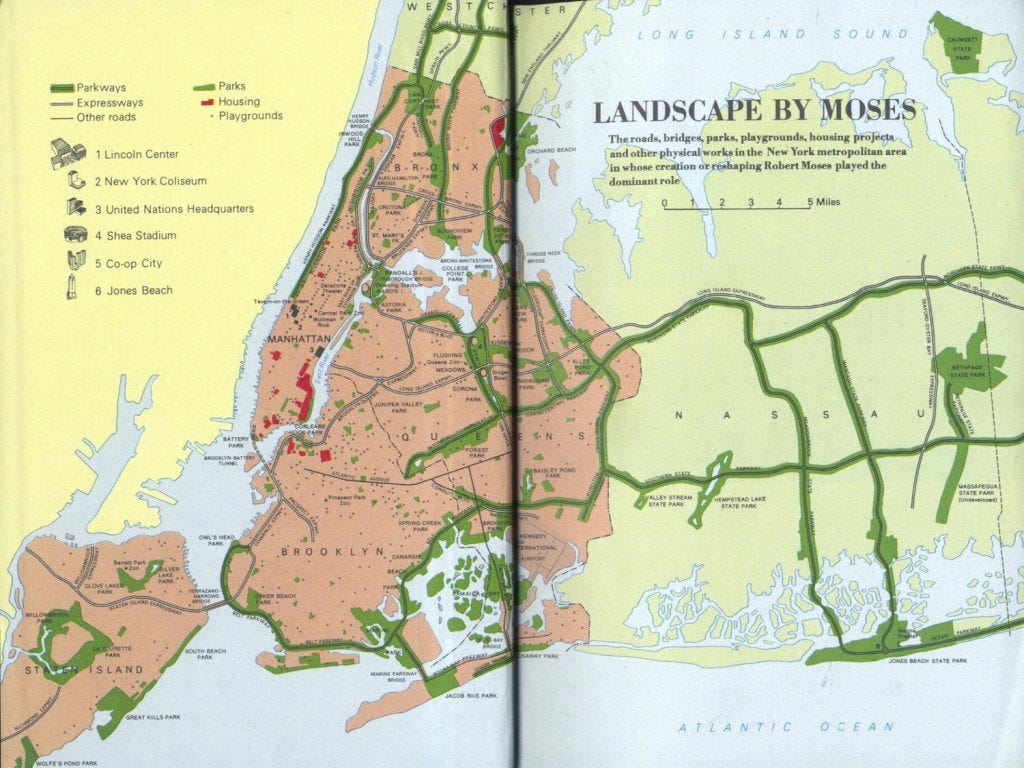
In the book ‘The Improvement of Towns and Cities’ we find the genesis of future motorways, promoted as ‘broad parkways or boulevards 400 feet (122m) broad (p.139) or 275 feet (84m) wide (p.168) to ‘provide pleasant driving between’ parks (p.158) a ‘chain-system of parks – the practical dream of a city beauty’ (p.165). ‘The roads that are glorified drives and nothing more – divide themselves into two classes: fast-roads and beauty-roads ... The fast-roads, or speed-ways ... Park roads in themselves ... there are no cross streets [grade separated] from end to end ... with the broad roadbed kept in perfect condition (p.166).
End note on advertising signs: Charles Mulford Robinson’s book mentions that ‘signs on buildings shall not exceed a height of three feet [0.9m] and land of ten feet [3m]’ (p.77) and that it was prohibited to advertise on the windows of public omnibuses (p.81).

